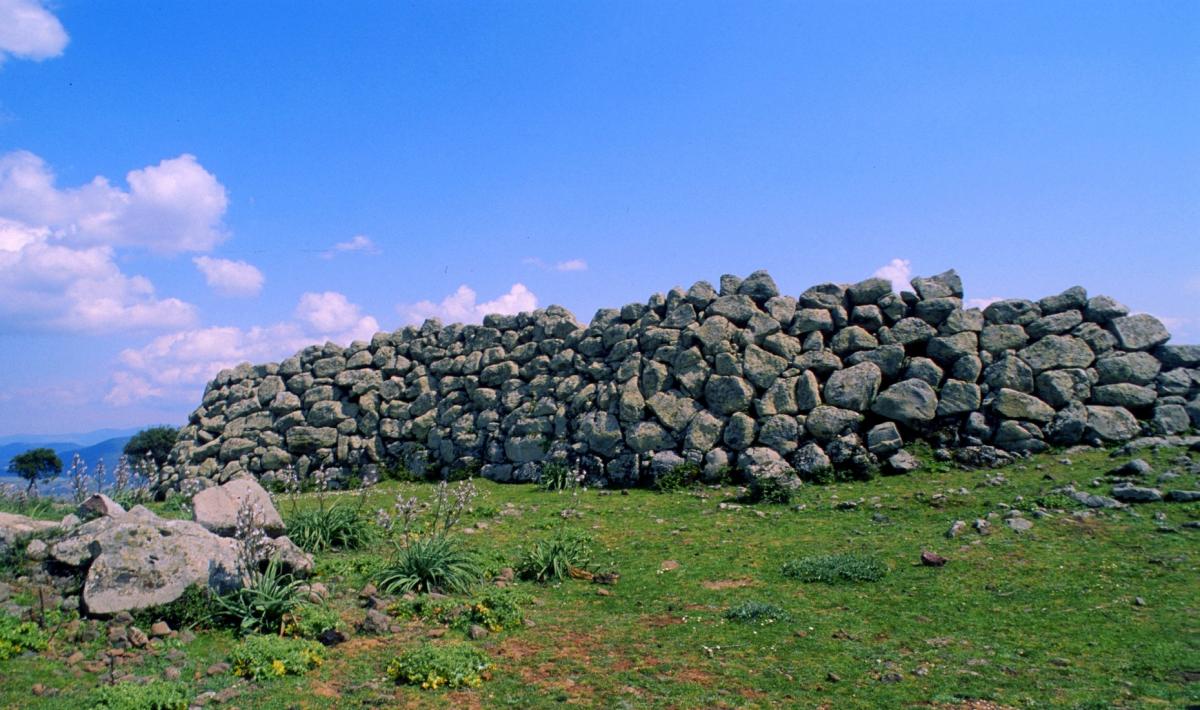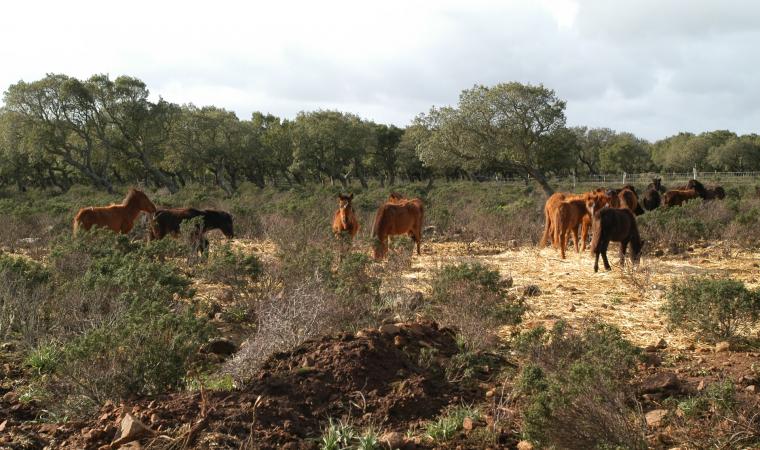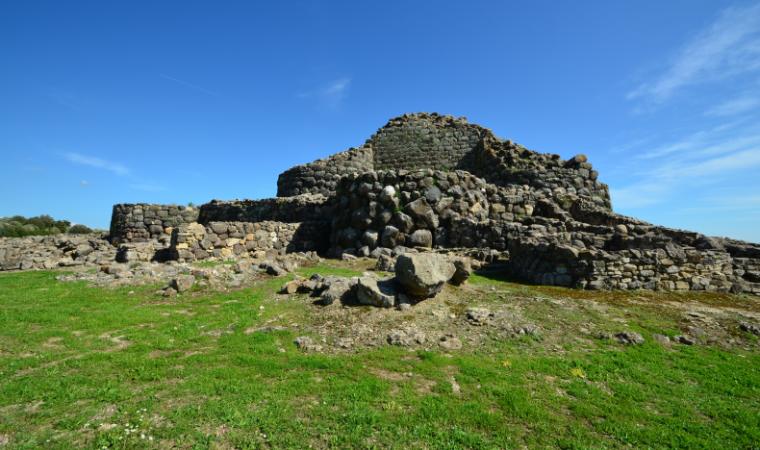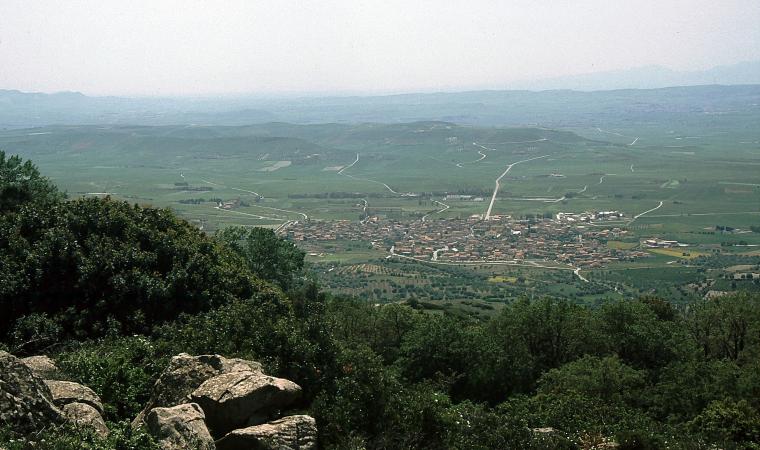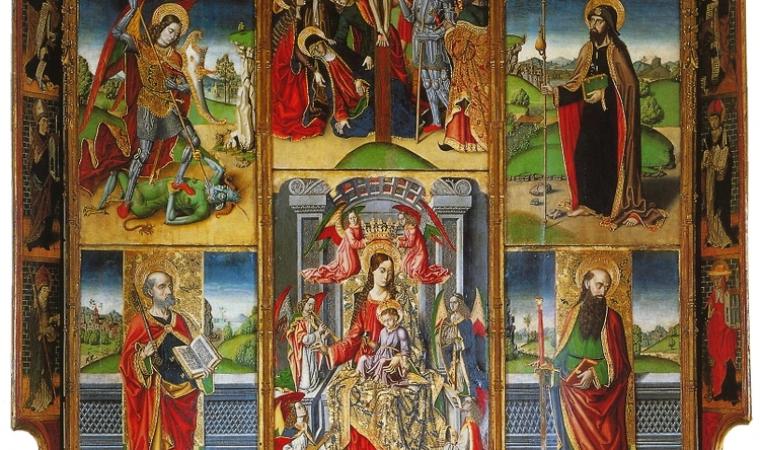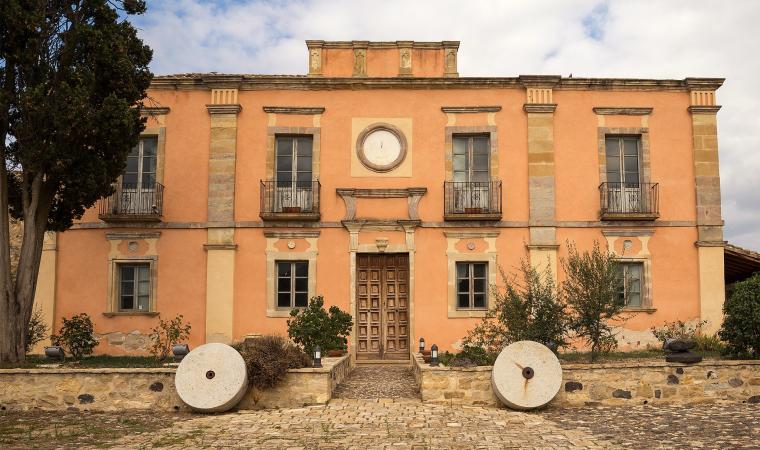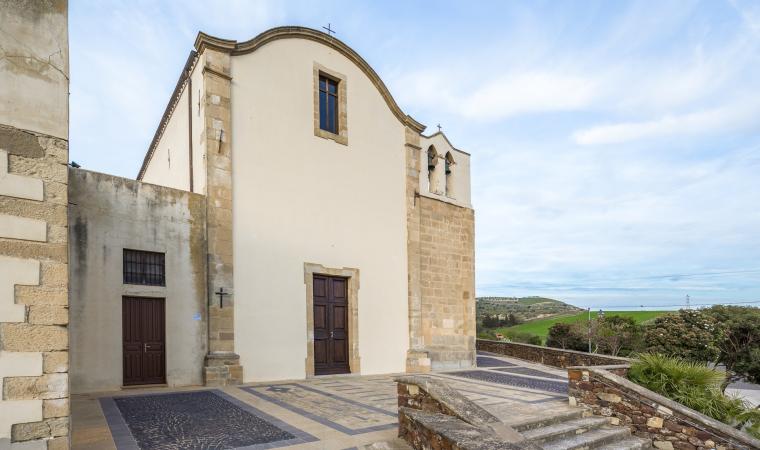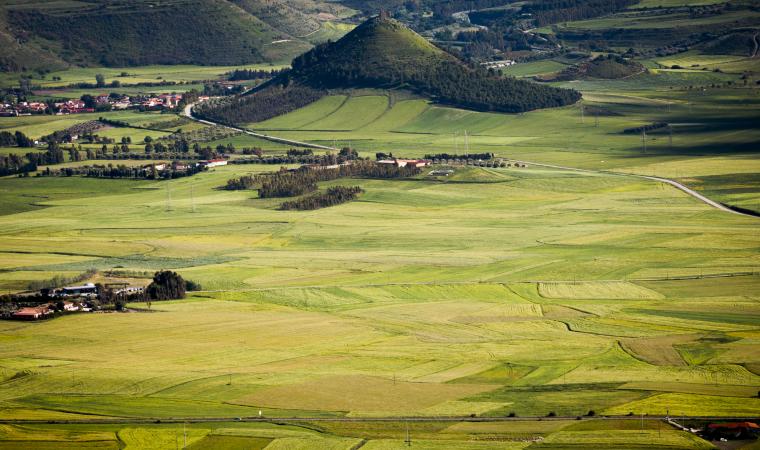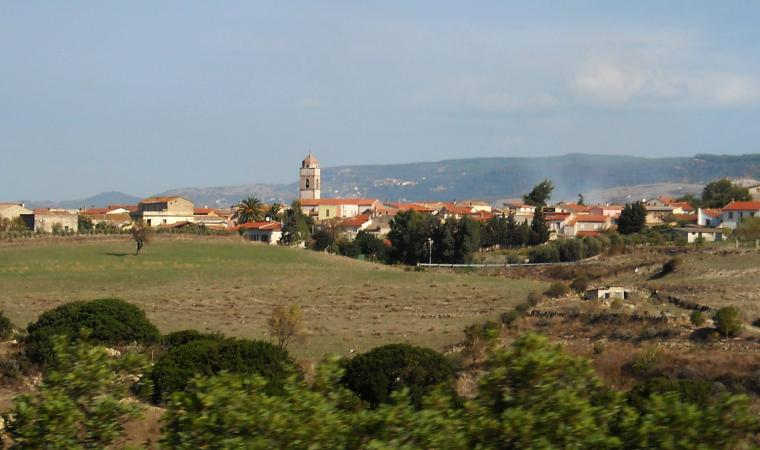Sa Jara manna, the Giara di Gesturi, is a special place under various aspects, first and foremost environmental and naturalistic, but also archaeological. The huge plateau, an unassailable natural fortress for thousands of years, today preserves traces of a very remote past: legacies from various eras reside on its slopes and on the summit. One of the most distinctive monuments dates back to the onset of the Nuragic civilisation, during the Middle Bronze Age (16th-14th century BC): it is the ‘father of all nuraghi’, the protonuraghe Madugui (local name) or Maduli (archaeological name), and it stands on the particularly protruding southeastern edge of the plateau. Today its walls are four and a half metres high, but were once higher. It is one of the most significant examples of Protonuragic (or Pseudonuragic) architecture, a prototype of the ‘corridor-type nuraghi’, which later evolved into towers or clusters of closed towers with a false dome (tholos).
The mighty building, a mammoth work, was built using huge irregular blocks of basalt, with an unusual, almost ‘kidney-shaped’ layout. It isn’t easy to ‘interpret’: for a long time, the Madugui was dated somewhere between the Copper Age and the Early Bronze Age, but later on it was dated to a more recent period. The unusual feature is a corridor that runs along its entire length on the inside, with various intramural niches. The narrow entrance of the corridor, on the southern side of the building, leads to a staircase, covered with rows of stone blocks jutting out, that continues upwards with a passageway leading to two circular rooms above, one on the left, the other at the back, originally interpreted - by the ‘father’ of Sardinian archaeology Giovanni Lilliu - as huts covered with straw. A more recent and likely theory interprets the two spaces as internal rooms with vaults made using the row technique with a truncated-ogival section. From the room at the back, a further downward stretch of corridor branches off, leading to the second (presumed) entrance. In the corridor, there is also an opening with a compartment that may have been the staircase providing access to the terrace. Corridor and rooms are surrounded by a concave-convex-shaped bastion.
About a hundred metres from the nuraghe you will see the remains of a village of huts, gathered into about ten blocks or, to be precise, connected to each other and placed around common central courtyards. The rooms are circular in shape and have paved and cobbled floors, with hearths, niches, seats and shelves on the walls. The materials found make it possible to distinguish the different functions of the various huts: preparation and cooking of food, processing of various materials, deposits or dumps. From the finds, it is also clear that the village emerged after the protonuraghe period, dating back to the Late Bronze Age (14th-10th century BC). Furthermore, demolition and renovation of the walls testify to the demographic and social liveliness of the town.
La Giara, famous above all for the small horses, is just over four kilometres uphill from Gesturi, the northernmost village in the Marmilla region, a destination for worshippers on pilgrimages to the modest home of the Blessed Nicola and a municipality that manages about half of the park's territory. This distance is the same between the parking area on the summit of the plateau and the complex of Bruncu Madugui, perhaps the centre of civil and religious power and certainly a point of reference clearly visible from afar, as with the other nuraghi that guarded is scalas, the points of entry to the plateau. There are 24 of them on the summit, mostly the single-tower type; while double this number, with single or multiple towers, stood at the foot of the plateau and on the slopes. Some complexes were frequented until the Early Middle Ages: Bruncu Suergiu, Pranu Omus and Santa Luisa. The prehistoric evidence on the Jara date back to before the Nuragic age, as is demonstrated by the menhir and domus de Janas of sa Ucca ‘e su paui, and later ones, as shown by the Punic-Roman villages of Tana and Tupp’e Turri.

